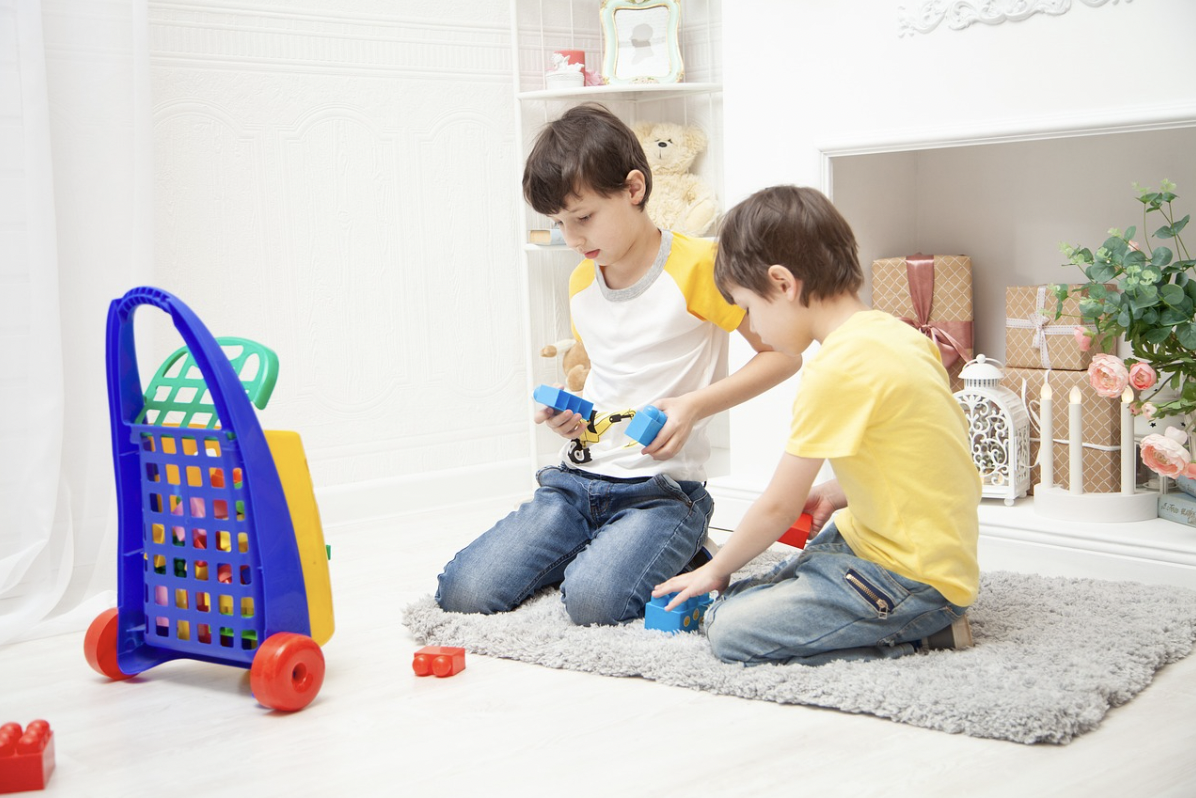Colorful Ways to Make Kids’ Rooms Feel Calmer and More Joyful

Designing a child’s room can be a joyous yet challenging task. The space needs to reflect their personality and provide a calming environment that encourages rest, creativity, and exploration. A perfect blend of colors can transform any room into a vibrant, inviting space. With the right approach, children can feel happier and more relaxed in their rooms. This article explores various colorful techniques to create a serene and joyful atmosphere in children's spaces.
Choosing a Calming Color Palette
Colors dramatically affect mood and perception. For children's rooms, soothing shades can foster tranquility while playful colors can inspire creativity. A calming color palette typically includes soft blues, gentle greens, and light yellows, which provide a peaceful backdrop. These hues are pleasing to the eye and scientifically proven to reduce stress levels. Strategic pops of vibrant colors, like bright pinks or yellows, can add excitement without overwhelming the senses.
Consider using these calming colors on larger surfaces such as walls or furniture. Painting walls in a soft mint green can create a serene environment, while accents in warmer tones can instill joy and energy. Collaborating with professional Seattle painters can help execute these color choices beautifully. They ensure the right shades and finishes are applied to enhance the effect.
Creating Defined Zones in the Room
Dividing the room into different zones can be beneficial for young children, offering a sense of structure and balance. Designating areas for sleeping, playing, and studying can help children understand boundaries, thus reducing chaos in their environment. Color plays a vital role in this zoning process. The sleeping area can be painted in soft blues to promote calmness, while the play area might use livelier colors like orange or yellow to evoke happiness and energy. This approach allows for a blend of tranquility and stimulation that can adapt as children grow.
Tape and paint techniques can be employed to create playful geometric shapes or patterns that define different zones without the need for physical barriers. Using patterns effectively makes the space both aesthetically pleasing and functionally distinct. When designing these zones, consider incorporating comfortable furniture and soft furnishings that complement the color scheme, fostering a safe and inviting environment.
Personalized Decorative Accents
Involving children in the decorating process strengthens their connection to their personal space. Incorporate colorful wall decals, artwork, and textiles that resonate with their interests. From superhero themes to princess motifs, personal touches invite joy and a sense of ownership. Creating a gallery wall displaying their artwork enhances the room’s aesthetics and encourages creativity and pride in their achievements.
Textiles such as plush rugs, colorful curtains, and soft throw pillows can add depth to a room. Opt for vibrant colors and playful patterns that can inject life into the space. Selecting these items together can be a fun activity that helps them feel invested in the design. This ownership can contribute to a more harmonious atmosphere where children feel truly at home.
Utilizing Natural Light and Space
Natural light is necessary in creating a vibrant and uplifting atmosphere. In a child's room, maximizing daylight through large windows or optical illusions, such as mirrors, can make the space feel larger and more inviting. When planning the room’s layout, aim to position furniture in a manner that encourages light flow. Lighter color palettes reflect light and contribute to a more upbeat environment.
Consider the layout to avoid clutter, maintaining an open space that promotes relaxation. Children are less likely to feel overwhelmed in a room that allows for easy movement and creativity. Establishing a serene environment where they can easily transition between activities can significantly enhance their mood and happiness.
Adding Elements of Nature
Integrating natural elements into children’s rooms can have grounding effects. Consider incorporating indoor plants, which enhance aesthetic appeal and help purify the air. Species like spider plants or peace lilies are hardy and safe for children, making them perfect options for a child’s room. The vibrant colors of the leaves can complement the chosen palette, adding both visual interest and a touch of nature to the décor.
Artwork or accents featuring nature themes can contribute to tranquility. Think forest prints, floral designs, or ocean motifs that can inspire calm and spark imagination. By bridging the gap between the indoors and outdoors, children can feel more connected to their surroundings and enjoy a space that feels pleasant and refreshing.
Incorporating Innovative Storage Solutions
Clutter can rapidly diminish the joy and tranquility in a room. Innovative storage solutions can maximize space and keep the environment orderly. Utilize colorful storage bins, baskets, or under-bed storage that aligns with the room's aesthetic. These can turn tidiness into a fun game for children, teaching them responsibility while keeping their space clutter-free.
Consider furniture that doubles as storage, such as ottomans or beds with built-in drawers. These solutions allow for colorful and functional elements that contribute to maintaining an organized environment. A clean space fosters a clearer mind, encouraging relaxation and creativity, which are aspects of a joyful childhood experience.
Letting Creativity Soar with Chalkboard Paint
At times, inspiring creativity in a child can be achieved through interactive elements in their room. One trendy solution is chalkboard paint, which allows for a designated area where kids can express themselves freely. Imagine a section of the wall painted in chalkboard paint, transforming it into a canvas for drawing and writing. This playful element adds an exciting visual component and gives children the freedom to express their emotions through art.
It’s important to configure this element within a calming color palette so as not to disrupt the serene atmosphere created by the room. The dark surface of chalkboard paint can create a striking contrast against soft hues, making it engaging without overwhelming the senses. Encouraging this form of artistic expression in a well-designed space can bolster their self-esteem and creativity, two crucial aspects of childhood development.
Creating a peaceful, joyful environment in a child’s room is about more than just color. It involves thoughtful design and consideration of the child’s needs. By implementing calming hues, defined spaces, and creative elements, you can curate an atmosphere that nurtures both happiness and tranquility. The goal is a room that is more than just a living space. A true sanctuary where children can thrive and grow.






